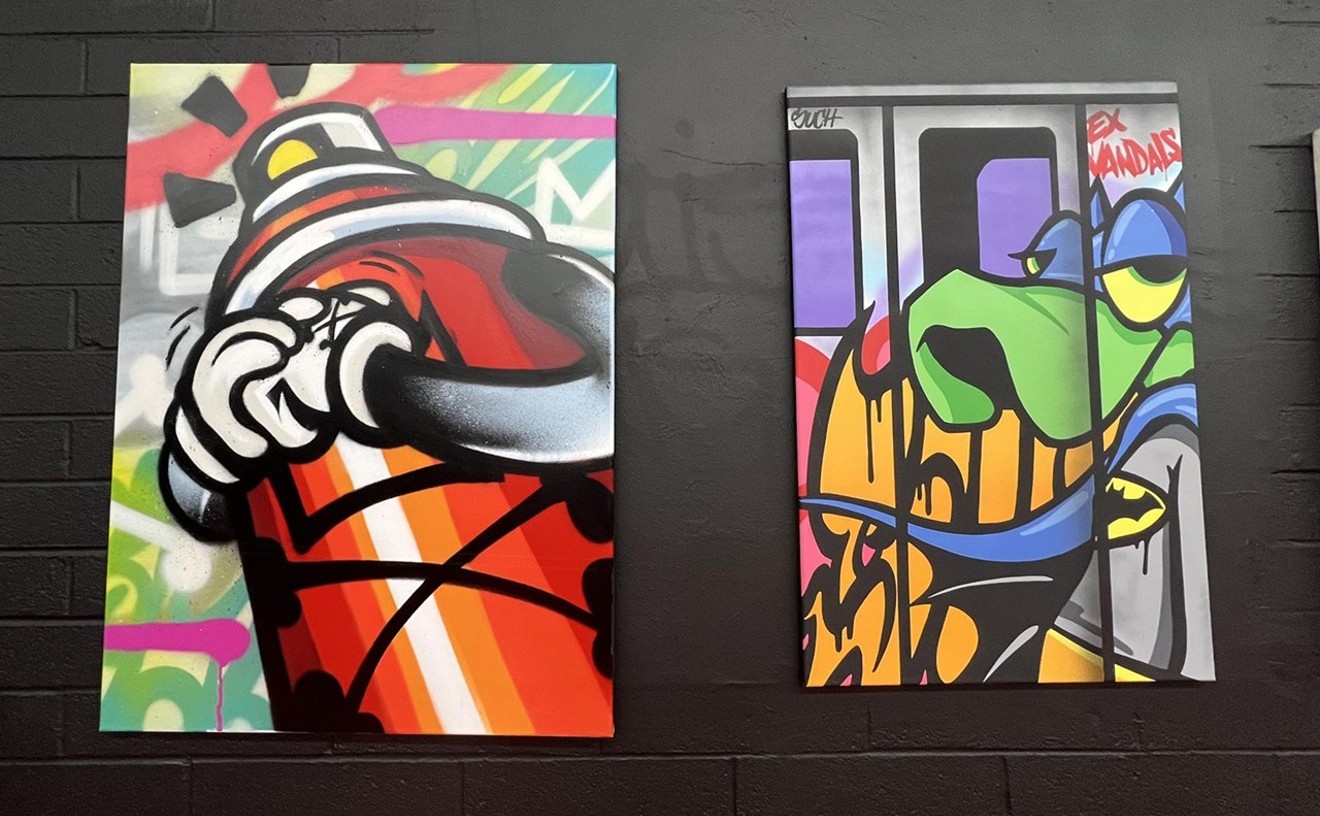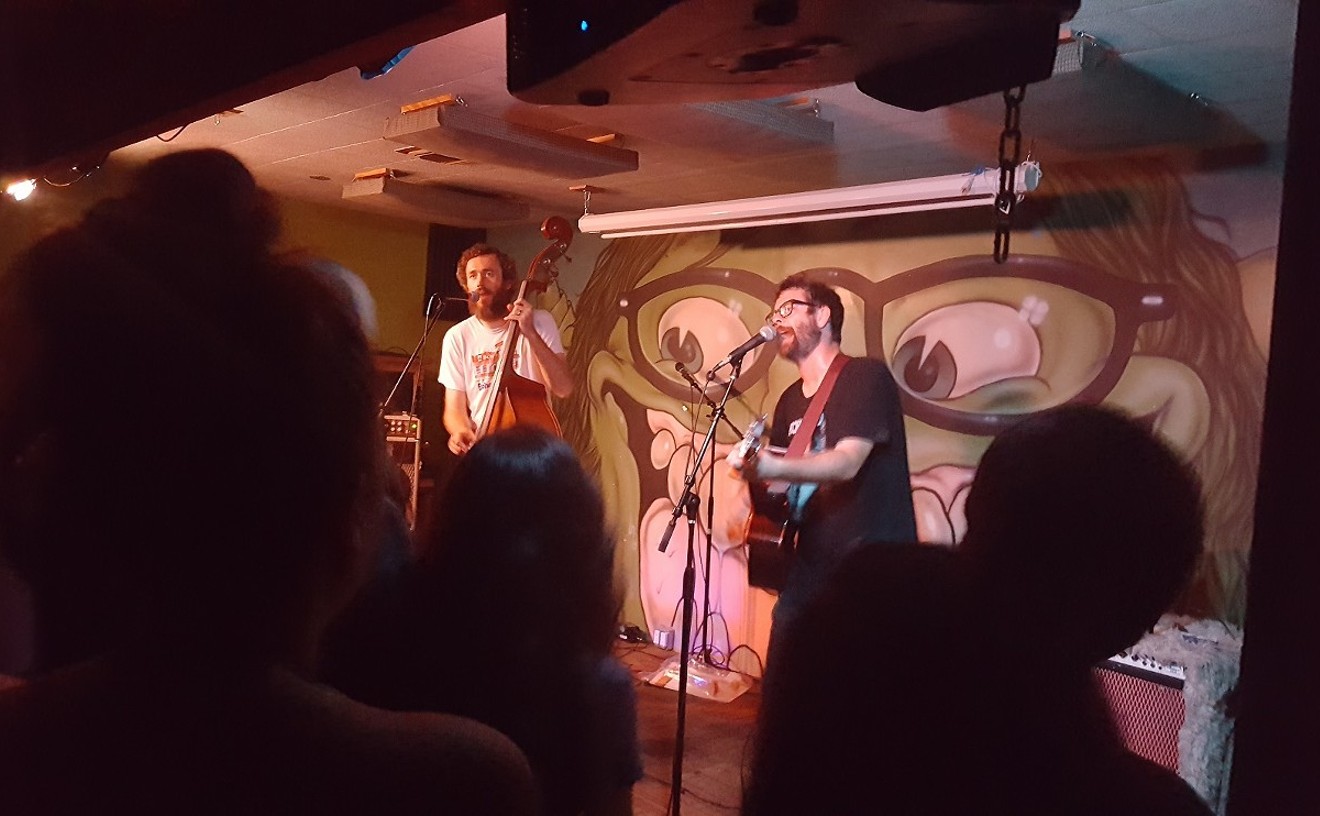And, after seeing this 13-minute piece, on loan from Santa Monica's Broad Art Foundation and staged locally in a stripped-down, shadowy, air-conditioned gallery infused with churchlike calm at ASU Art Museum, there will be no doubt about why Neshat's work has swept the international contemporary art world like a raging wild fire.
The second part of a short-film trilogy Neshat began in 1998, Rapture is a personal and intensely emotional cinematic response to the artist's unsettling return to Iran in 1990 after an 11-year sojourn in the United States. Until then, Neshat was unable to return to her homeland after a fundamentalist Islamic revolution wrested power in 1979 from the westernized, more secular regime of Mohamed Reza Palavi, the Shah of Iran.
"It was shocking," says Neshat, referring to her initial response to Iran's changes during her absence, in a recent interview with New York Times Magazine writer Clyde Haberman. "Everyone had gone through this major identity crisis. Before I left they were Iranian-Persians, and now they were strict Muslims. Visually everything was black and white, and women had to be in dark clothes. I would walk around and see people getting harassed in the park. They were taken away in buses because they were wearing nail polish or the wrong stocking."
Draconian interpretation of Islamic religious law, adopted by Iran's new clerically based government, required women (and today even foreign women tourists) to wear the chador in public (a long, black dress with a matching veil often covering the bottom portion of the face). Inevitably, the chador, a symbol of the societal repression under which Iranian women have existed for the last 20 years, figures prominently in Rapture -- and in Shirin Neshat's work in general.
Neshat's two-screen video projection was atmospherically shot in 16mm black-and-white film in a 200-year-old casbah -- a generic term for fortress -- overlooking deserted rocky beaches in Essaouira, Morocco (an Islamic country that is perhaps the most tolerant and least rabidly orthodox of any in the world). Ironically, Essaouira, now a mecca for surfers, is the same ancient North African seaport town where, 50 years ago, Orson Welles filmed parts of his production-plagued Othello, the famed actor/director's 1952 version of Shakespeare's tragic love story. It's also the place where, in the '60s, drugged-out rockers Cat Stevens and Jimi Hendrix, together with a marauding army of ragtag hippies, landed for some R and R. Stevens, who now goes by the name of Yusuf Islam, is a devout, proselytizing Muslim convert who in 1989 publicly announced that he supported the death sentence imposed by Iran's Ayatollah Khomeini on Salman Rushdie for authoring The Satanic Verses.
Despite its odd, though strangely appropriate, history, Essaouira's desolate seaside landscape and foreboding stone battlements, unchanged for centuries, are suited to Neshat's minimalist narrative, with its haunting motif of stringent separation, isolation and ultimate escape.
The artist has transferred her original film to a DVD format, which, split into two distinct sets of footage, allows it to be projected on opposite walls of the museum gallery. Sitting on benches provided in the gallery, the viewer is trapped between male and female sides of Shirin Neshat's completely unspoken story, its opposing sides, like Islamic men and women in public, never touching or interacting. Because two films are being shown simultaneously (though each is eerily reactive to what's occurring in the other), even the casual viewer feels compelled to watch Rapture several times to piece together its thematic puzzle.
The video opens with chanting men in white shirts and black pants marching through the crenelated ramparts of an old fortress, complete with moldering cannons pointed seaward, on the right; on the left, a desert horizon of women swathed completely in black chadors walks closer and closer, as the sound of wind whistles in the background. When they stop advancing, the women silently look on as the men busily hoist ladders against the old stone walls of the fortress. What appears to be playful camaraderie among the men turns into a pushing and shoving match looked down upon by other men lining surrounding walls. As the fighting ensues, the women, banded together in a black wedge, begin to ululate in traditional Middle Eastern fashion, their sorrowful, animal wail unheeded by the men. Eventually, the women turn and trudge into the bleak landscape around them, while the men stare at their retreat.
As the men form concentric circles, the innermost of which is performing what appear to be ritual ablutions, the women return en masse and, stopping close to the camera, raise their hands, the palms of which have been covered with calligraphic writing. Though the women do not speak, the unsettling sound of chanting female voices overpowers a sole male voice chanting. The women eventually bow, then prostrate themselves on the desert sand. The chanting comes in ever louder waves, like the roar of the sea. Though the women turn and walk slowly into the desert again, the men continue to perform their inexplicable rituals unabated, passing bowls of fire as they clap and rolling out carpets in a sort of frenzied relay race.
In the final minutes of the film, a close-up of bare feet dancing on a drum segues into imagery of the women dragging a battered wooden boat to the edge of the sea from the rocky shore as the men watch wordlessly from the battlements of the fortress. In the background, melancholic voices sing a haunting, unstructured song. A few of the women, with the help of the others left behind, climb into the boat and motor out to open sea. As the rest of the women walk with their backs turned toward the sea like a flock of seabirds, the men stand mute on the battlements, waving their arms in slow motion in an apparent attempt to induce the women to return.
Rapture is, on one level, a lyrical treatment of women both physically and psychically imprisoned by the traditional restraints imposed upon them by fundamentalist Islamic society (needless to say, Neshat hasn't been particularly welcome back in Iran because of her work). But this visually stunning, richly layered video, marked with unmistakable traces of the artist's training as a painter, deftly soars above mere political statement or feminist agitprop into universally understood visual poetry about communication (and lack thereof), restraint, tradition and ritual, loss, liberty and escape.
There's a cabalistic quality, a sense of mystery and cryptic ceremony, to Neshat's film that's at once compelling and oppressive, not unlike the aura of religion itself. The only thing that could possibly make Rapture any better than it already is would be for the museum to have concurrently shown the other two films in Neshat's trilogy -- though the film stands complete and unassailable by itself. But people in hell want ice water, so I'll just have to be thankful that such a remarkable work can be seen throughout the summer right here in the Valley -- for free.










